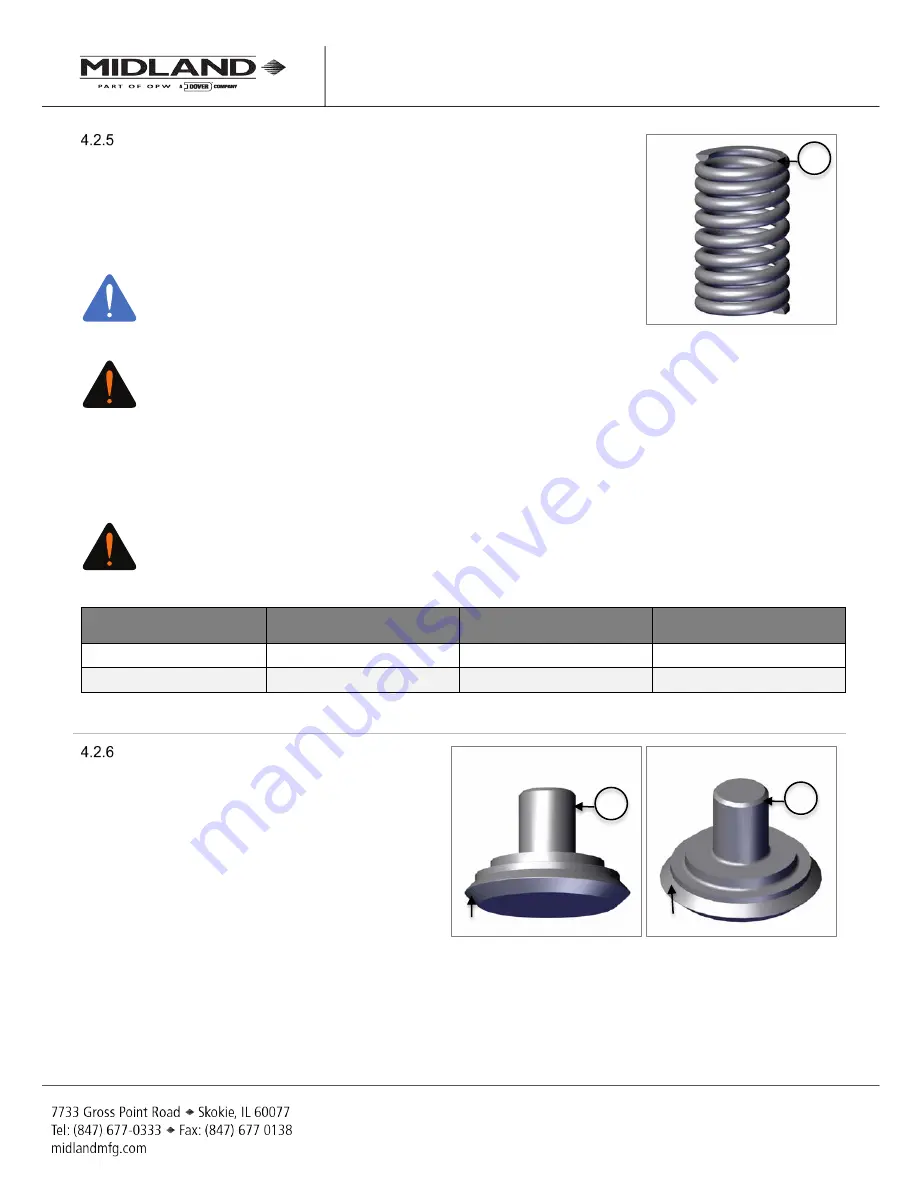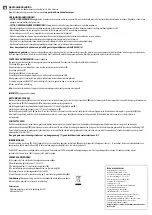
A-1477/A-14167, Rev. 0
Page 23 of 37
Manual content is subject to change.
Visit midlandmfg.com for latest manual revision and revision history.
Spring Inspection
The spring (item 5) is a highly stressed part. The exterior surface must be
free of pitting, cracks and corrosion. If necessary, use magnetic-particle or
dye-penetration inspection (performed by certified and trained personnel) to
evaluate the exterior surface and ensure that it is free of cracks and corrosion
pits. If any excessive wear over 0.030” of the area is measured or observed,
the spring cannot be repaired and must be replaced.
NOTE:
Use of Enhanced Inspection Methods,
(LPI, MPI, etc.) is recommended.
Figure 4-22 Spring Inspection
WARNING: Valve-Spring Failure.
Defects in coil springs, such as cracks and corrosion pits, can act as
stress concentrators. Failure to detect these defects can result in coil-spring breakage and uncontrolled
valve venting.
Test the springs by pressing them to 80% of maximum deflection in a press for two (2) minutes. Remove from
the press and then measure the spring free-height. If free-height is less than the minimum indicated in Table 4-
2, replace the spring.
WARNING: Deficient Valve Travel.
Coil springs that have taken a “set,” resulting in an undersized free-
height, will not allow the valve to open fully. The spring should not be bowed more than 1/4" when in the
assembled position. Bowing in excess of this amount can cause the spring to rub against the inside wall
of the nozzle or guide tube and adversely affect the pressure settings. If any of the defects mentioned
above are observed, the spring cannot be repaired and must be replaced.
Spring Part Number
Wire Size (REF) (Inches)
Height at 80% of Max.
Deflection (Inches)
Minimum Free-Height
(Inches)
15-150-MO
0.28
2.8
4.00
15-225-SS
0.28
3.13
4.80
Table 4-2 Minimum Free-Heights for Spring After Pressing 80% of the Maximum Deflection for Two (2) Minutes
Plug Inspection
Visually inspect the plug (item 3) paying close
attention to sealing surfaces. It should be free
of corrosion, nicks, dents, scratches and pits.
Since the O-rings must seal against these
surfaces, any irregularities can cause the
valve to leak. Clean these areas by sanding
lightly with emery paper (400-grit). If this does
the effectively clean the part, replace this part.
The plug must be free of gouge marks,
corrosion, pits and rust. If present, this part is
rejectable and should be replaced.
The sealing surface is the crown of the seat.
Clean the seat with emery paper (400-grit)
then wipe it clean with a cloth and a suitable
solvent. Run your fingernail aroudn the surface
to detect any flaws. If any flaws are found, the
part is rejectable and should be replaced.
Figure 4-23 Plug Inspection
NOTICE
WARNING
WARNING
5
3
3
Seat Sealing Surface
O-Ring Sealing Surface















































